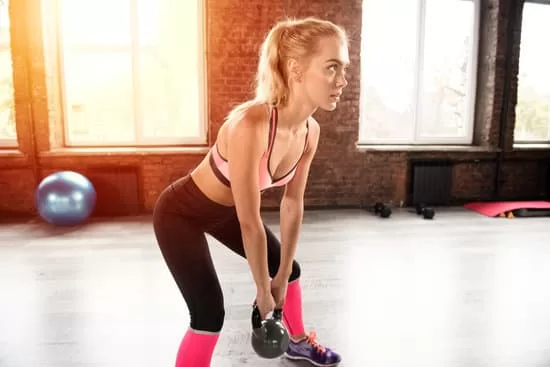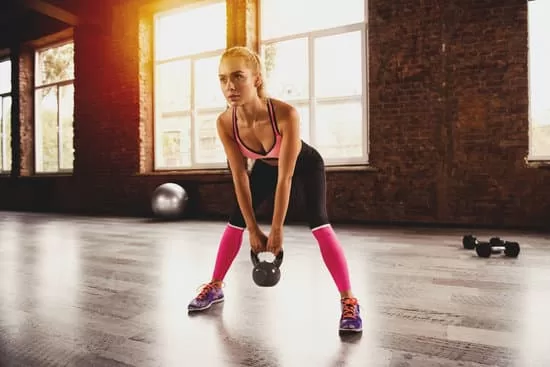Sports & Wellness, Workout
Part 2: Low-Intensity Activities That Burn Calories
Burn Calories with Pleasant Activities
Part 2: Low-Intensity Activities That Burn Calories
Welcome to Part 2 of our series on burning calories through enjoyable activities. In this installment, we’ll delve into low-intensity activities that are not only enjoyable but also effective at burning calories. These activities are ideal for those who prefer a gentler approach to exercise, those recovering from injuries, or anyone looking to add some variety to their fitness routine without excessive strain.
Low-intensity activities offer the perfect balance of gentleness and effectiveness, allowing you to maintain your health and manage your weight in a relaxing yet productive manner. Whether you’re looking to ease into a more active lifestyle or simply want to diversify your existing routine, this segment will provide you with numerous options to stay active, engaged, and energized.
Join us as we explore a range of activities that prove you don’t need high-impact, strenuous workouts to achieve your health and fitness goals. From walking and gardening to yoga and swimming, discover how these enjoyable, low-intensity activities can help you burn calories and enhance your overall well-being.
1. Walking and Daily Steps
Walking is one of the most accessible and straightforward ways to engage in physical activity, and it’s a quintessential example of a low-intensity activity that can significantly contribute to your caloric burn and overall health. This section explores the benefits of walking, provides tips on how to incorporate more steps into your daily routine, and discusses how to maximize the health benefits of walking.
The Benefits of Walking
Health Benefits:
Walking regularly can help reduce the risk of chronic diseases such as heart disease, stroke, diabetes, and some cancers. It enhances cardiovascular fitness, strengthens bones, reduces excess body fat, and boosts muscle power and endurance.
Mental Health Enhancements:
Walking also supports your mental health. It can improve mood, decrease feelings of depression and anxiety, and improve self-esteem. The act of walking, especially in nature, can have a meditative effect, helping to clear the mind and reduce stress.
Accessibility:
Walking doesn’t require special equipment or a gym membership, making it an accessible form of exercise for people of varying fitness levels and economic backgrounds. It can be done virtually anywhere—from city streets to rural pathways to indoor treadmills.
Integrating More Steps into Your Daily Routine
Set a Daily Step Goal:
Using a pedometer or a smartphone app to track your steps can be incredibly motivating. Start with a realistic goal based on your current activity level—perhaps 5,000 steps per day—and gradually increase this as you become more comfortable.
Incorporate Walking into Routine Activities:
Look for opportunities to walk more in your daily life. Park further away from the store entrance, take the stairs instead of the elevator, or consider walking to work or the store if feasible.
Take Short Walking Breaks:
If you work at a desk, try to stand up and take a brief walk every hour. Even a five-minute walk can help stretch your legs, refresh your mind, and contribute to your daily step count.
Walking Meetings:
If possible, conduct meetings on the go. Walking meetings are not only good for your physical health but can also boost creativity and improve focus.
Maximizing the Benefits of Walking
Vary Your Walking Routine:
Change your route frequently to keep the scenery interesting and engaging. Incorporate different terrains such as hills or trails to challenge your body in new ways and increase calorie burn.
Use Proper Technique:
Maintain good posture with your head up and shoulders relaxed. Swing your arms naturally and tighten your stomach slightly, stepping smoothly from heel to toe to make your walk more effective and comfortable.
Combine Walking with Other Exercises:
To enhance your routine, consider integrating other low-intensity exercises such as stretching or light strength training before or after your walk. This not only burns more calories but also keeps your workouts varied and interesting.
Walking is a fantastic low-intensity activity that not only helps burn calories but also is immensely beneficial for both physical and mental health. By making walking a regular part of your life and finding creative ways to incorporate more steps into your day, you can enjoy significant health benefits with minimal impact on your body.
2. Household Chores as Exercise
Household chores might not be the first thing that comes to mind when you think of burning calories, but they can be an excellent way to incorporate more physical activity into your daily routine. Engaging in household tasks not only keeps your living space clean and organized but also provides numerous health benefits through low-intensity, functional movements. This section discusses how different household chores can serve as effective calorie-burning activities and offers tips on how to maximize their health benefits.
Health Benefits of Household Chores
Cardiovascular Fitness:
Activities like sweeping, mopping, and vacuuming can raise your heart rate, providing a cardiovascular workout that improves heart health and stamina.
Muscle Toning and Strength:
Lifting laundry baskets, moving furniture, and scrubbing floors can help build and tone muscles in your arms, legs, and core.
Flexibility and Mobility:
Reaching, stretching, and bending during tasks like dusting and organizing can enhance flexibility and range of motion.
Stress Reduction:
The act of cleaning and organizing your environment can also reduce stress and anxiety, offering a sense of accomplishment and control.
Calorie-Burning Household Chores
Vacuuming and Sweeping:
These chores involve constant movement, including walking and arm movements, which can burn up to 170 calories per hour depending on your body weight and intensity level.
Gardening:
Bending, planting, weeding, and digging are all physically engaging activities that can burn around 200-400 calories per hour, making gardening one of the more intense household chores.
Washing Dishes:
While it might seem less intense, standing at the sink and washing dishes can burn about 160 calories per hour, and this task often takes longer than expected, adding up in terms of caloric expenditure.
Window Cleaning and Dusting:
These activities involve a lot of arm movement and can burn approximately 150 calories per hour. They also require stretching and reaching, contributing to your overall flexibility.
Tips for Maximizing the Benefits
Increase Intensity:
Try to move more quickly or add extra steps between tasks. For example, take the long route around your house when moving from one chore to another.
Incorporate Squats and Lunges:
When picking items up from the floor or doing laundry, use squats or lunges instead of bending over from the waist. This will help strengthen your legs and core.
Set Timers for Activity Bursts:
Challenge yourself with timed bursts of intense activity. For instance, see how much you can get done in a 10-minute period, and then try to beat your ‘score’ the next time.
Use Manual Tools:
Opt for manual tools instead of electric ones when possible. Using a manual lawnmower or a non-electric vacuum can increase the amount of effort and energy expended during the task.
Household chores offer a dual benefit: a cleaner living space and a healthier body. By viewing these everyday tasks through the lens of exercise, you can improve your physical health while accomplishing necessary daily activities. This makes household chores an excellent option for anyone looking to increase their activity levels in a practical, sustainable way.
3. Leisurely Hobbies That Keep You Active
Leisure activities and hobbies that engage your body can be a joyful and unobtrusive way to incorporate more movement into your life. These low-intensity hobbies not only help maintain physical health but also enrich your mental and emotional well-being, making exercise feel less like a chore and more like a rewarding part of your day. This section highlights various leisurely hobbies that are effective at burning calories while providing enjoyment and relaxation.
Types of Leisurely Hobbies
Gardening:
Gardening is a therapeutic hobby that involves various physical activities such as digging, planting, weeding, and watering. Spending an hour in the garden can burn anywhere from 200 to 400 calories. It not only helps with physical fitness but also improves mood and reduces stress by connecting you with nature.
Playing Musical Instruments:
Playing instruments like the guitar, piano, or drums can surprisingly burn more calories than you might expect, especially drums, which can be quite a workout. Engaging in musical activities for an hour can burn between 100 to 250 calories, enhance cognitive functions, and reduce stress.
Photography:
Photography encourages you to walk, climb, or hike to get the perfect shot, making it an excellent hobby for staying active. While it might not burn as many calories as more strenuous activities, it certainly increases your activity level more than sedentary pastimes.
Bird Watching:
Bird watching is another engaging hobby that requires significant walking, often in varying terrains of parks or wildlife preserves, which is great for burning calories, improving cardiovascular health, and enhancing mental focus.
Painting and Sculpting:
While seemingly sedentary, painting and sculpting can involve standing for long periods, moving around a large canvas, or handling heavy materials, all of which can help maintain moderate physical activity levels.
Enhancing the Benefits of Leisurely Hobbies
Set Challenges for Yourself:
If your hobby involves physical activity, set small challenges to increase the intensity. For example, if you enjoy photography, challenge yourself to walk a little farther or hike a slightly steeper trail to capture your shots.
Combine Activities:
Mix activities to keep your hobby engaging and physically beneficial. For instance, if you like painting, you might spend one session painting outdoors, requiring you to carry your supplies to a scenic location, thereby adding a walking element.
Make It Social:
Involve friends or join clubs that focus on your hobby. Social interactions can not only make the activity more enjoyable but often mean you’ll spend longer engaging in the hobby, thus burning more calories without even noticing.
Regularly Switch Focus:
If your hobby allows for variation, switch your focus regularly to engage different muscle groups or to prevent monotony. For example, alternate between different types of gardening tasks or musical instruments to keep things interesting and physically beneficial.
Incorporating these leisurely hobbies into your lifestyle provides a fun and sustainable way to stay active. By engaging in enjoyable low-intensity activities, you not only burn calories and improve physical fitness but also enhance your psychological health, making your leisure time both enriching and health-promoting.
Embracing Gentle Movements for Health and Enjoyment
Throughout Part 2 of our series, we have explored various low-intensity activities that not only burn calories but also enhance overall well-being in a gentle and enjoyable manner. From the rhythmic steps of walking to the methodical chores of household maintenance, and the engaging pursuits of leisurely hobbies, each activity offers unique benefits and opportunities for physical engagement without the strain of high-intensity workouts.
Walking and daily steps are foundational to integrating movement seamlessly into your daily routine, proving that simple actions can lead to significant health improvements. Household chores, often overlooked as a form of exercise, have shown that everyday tasks can transform into calorie-burning sessions that also accomplish practical needs around the home. Lastly, leisurely hobbies like gardening, playing musical instruments, and photography invite us to combine passion with physical activity, enriching our lives and enhancing our health without the pressure of traditional exercise routines.
As we move forward, remember that the key to a sustainable fitness journey lies in finding joy and purpose in the activities you choose. Low-intensity activities are particularly beneficial for those starting their fitness journey, dealing with physical limitations, or simply seeking a more relaxed approach to staying active. These activities reinforce the idea that health and fitness should complement your lifestyle, not complicate it.
In the next part of our series, we will delve deeper into how these activities can be strategically incorporated into your daily life to maximize health benefits and maintain a balanced, enjoyable approach to burning calories. Stay tuned to discover more ways to make your calorie-burning journey not just effective, but truly enjoyable.
Part 3: Social and Recreational Activities for Enjoyable Caloric Burn
Part 3 explores how engaging in group sports, dance, and adventure activities not only boosts [...]
Feb
Part 2: Low-Intensity Activities That Burn Calories
Part 2 of our series explores low-intensity activities like walking, household chores, and leisure hobbies [...]
Feb





